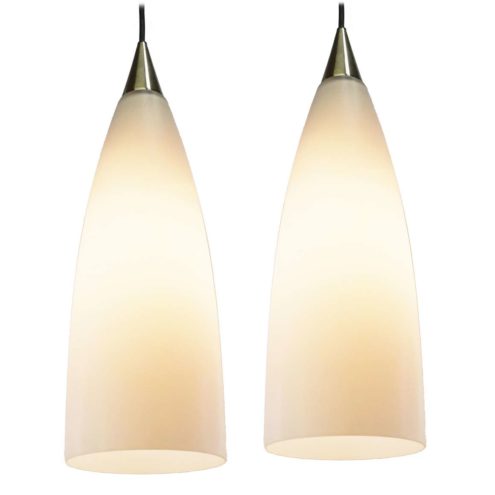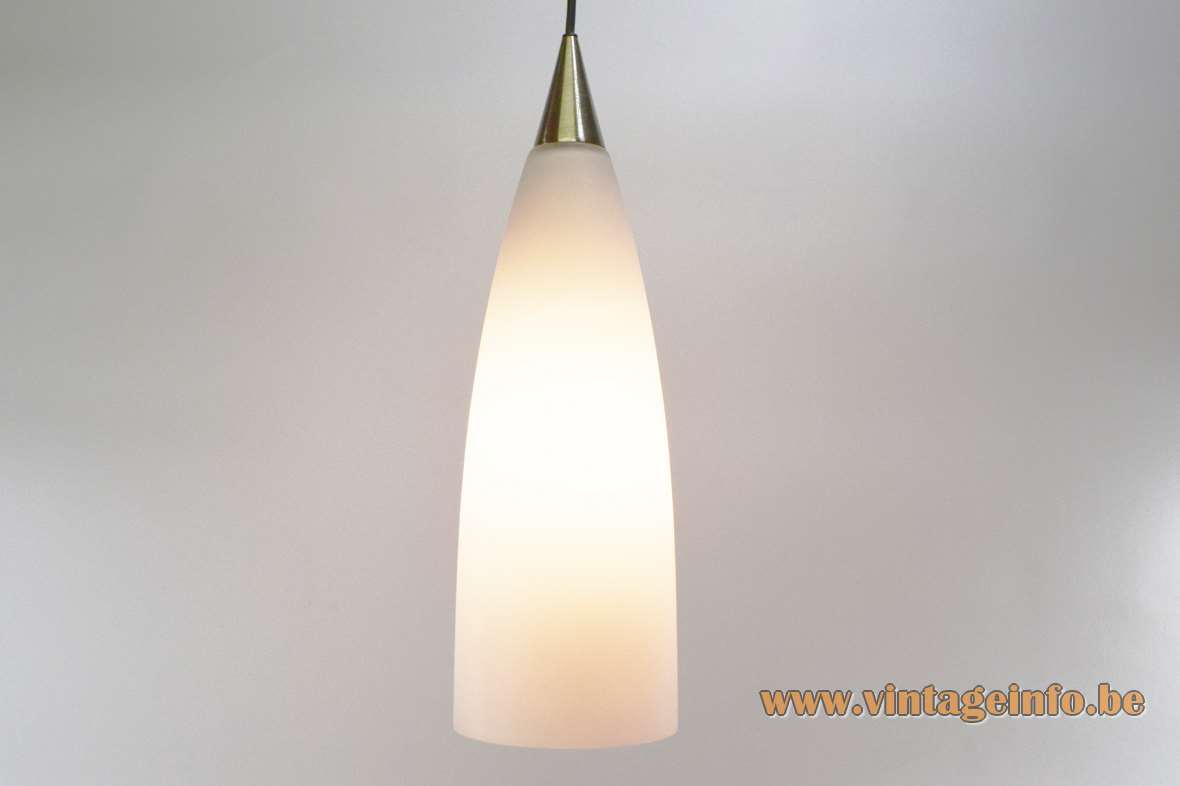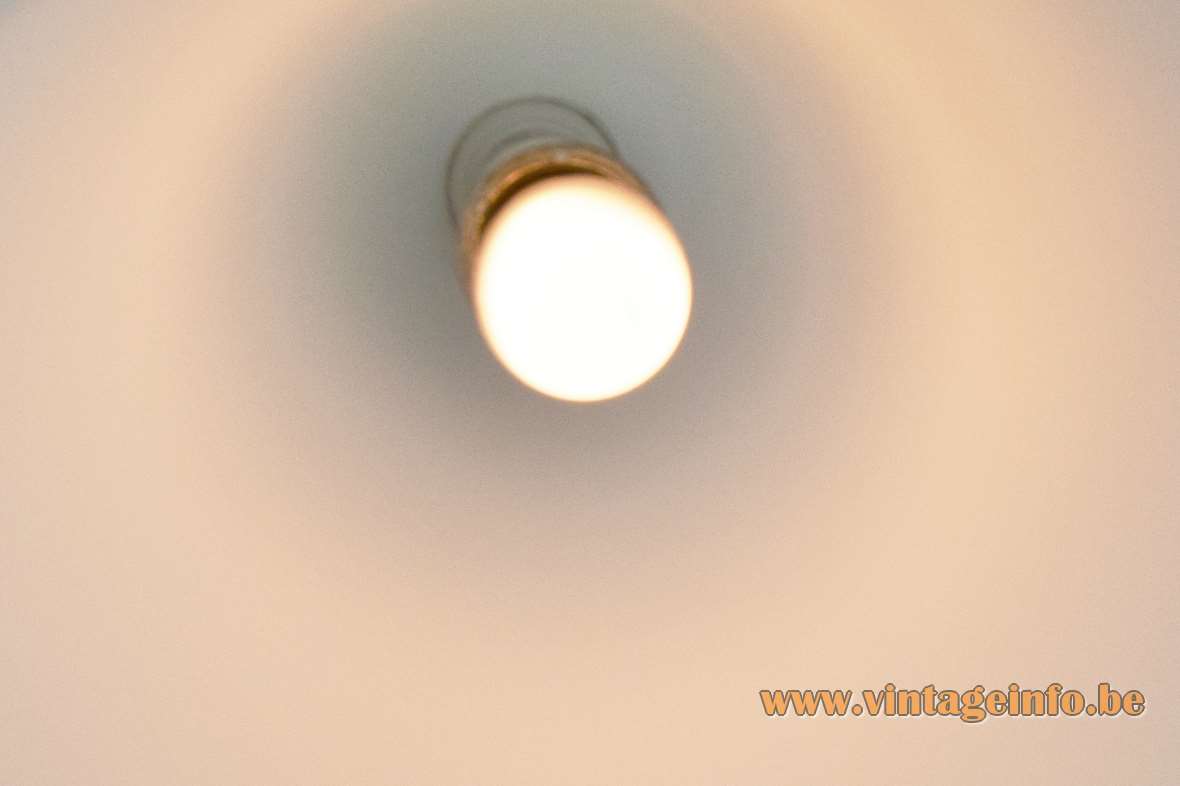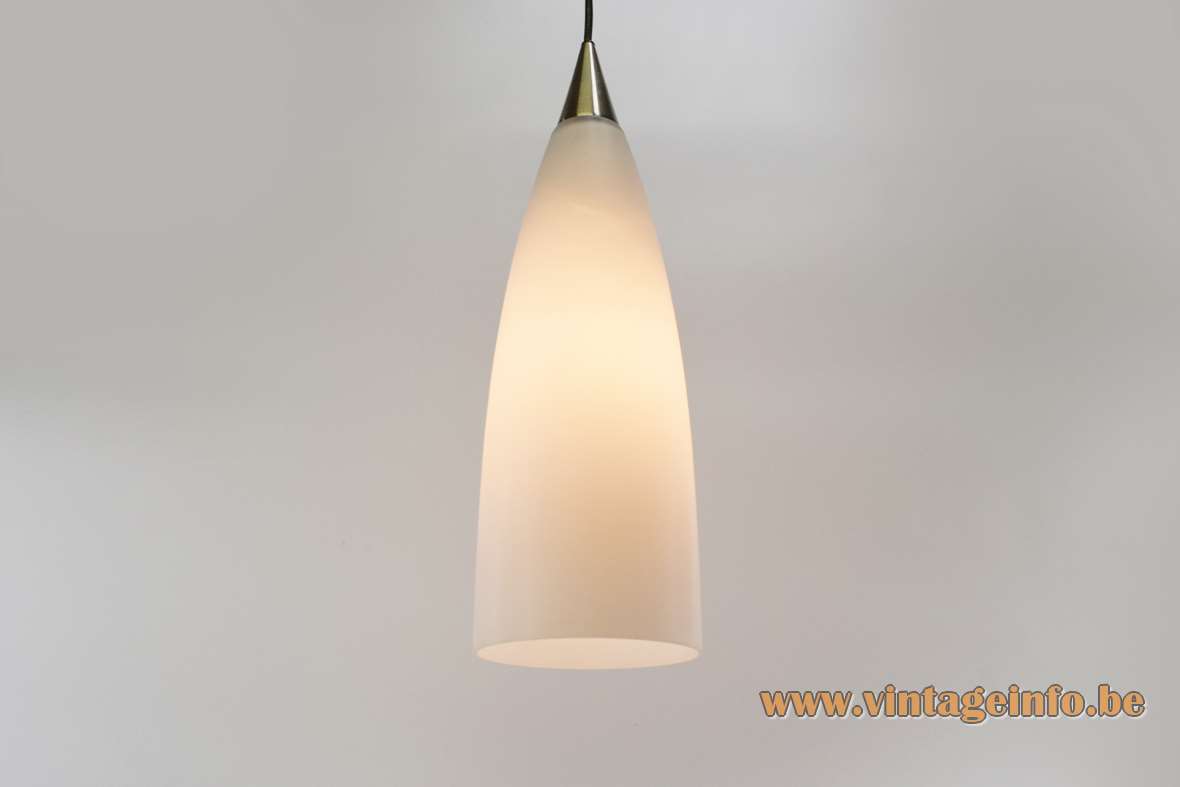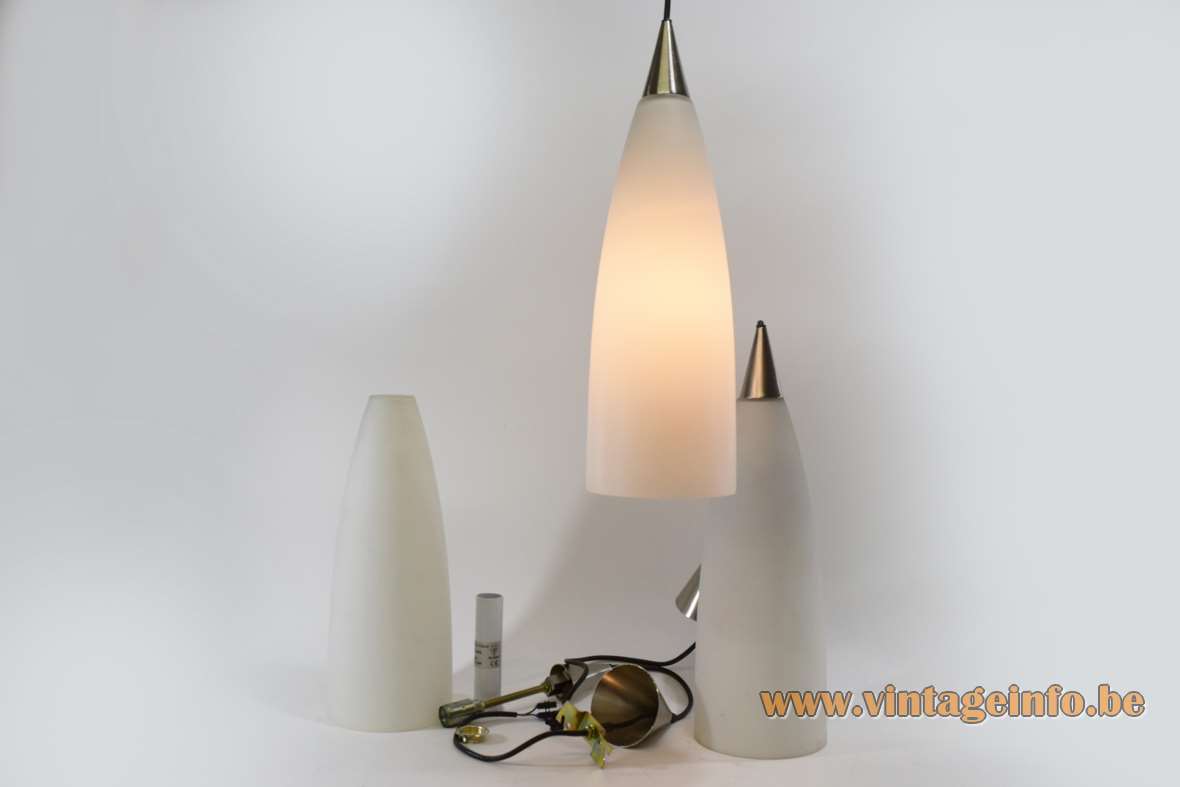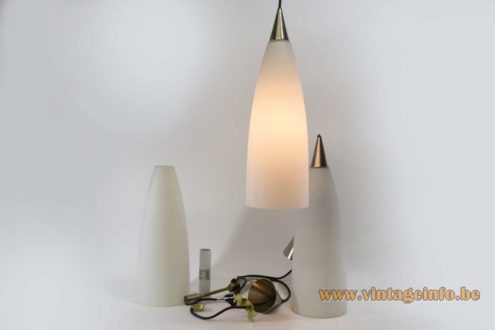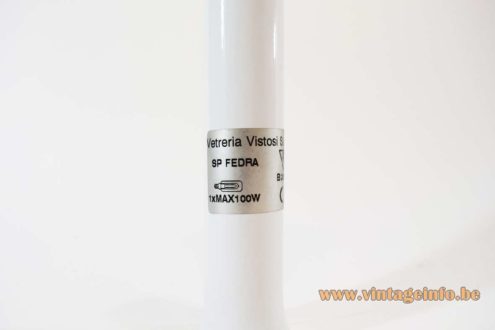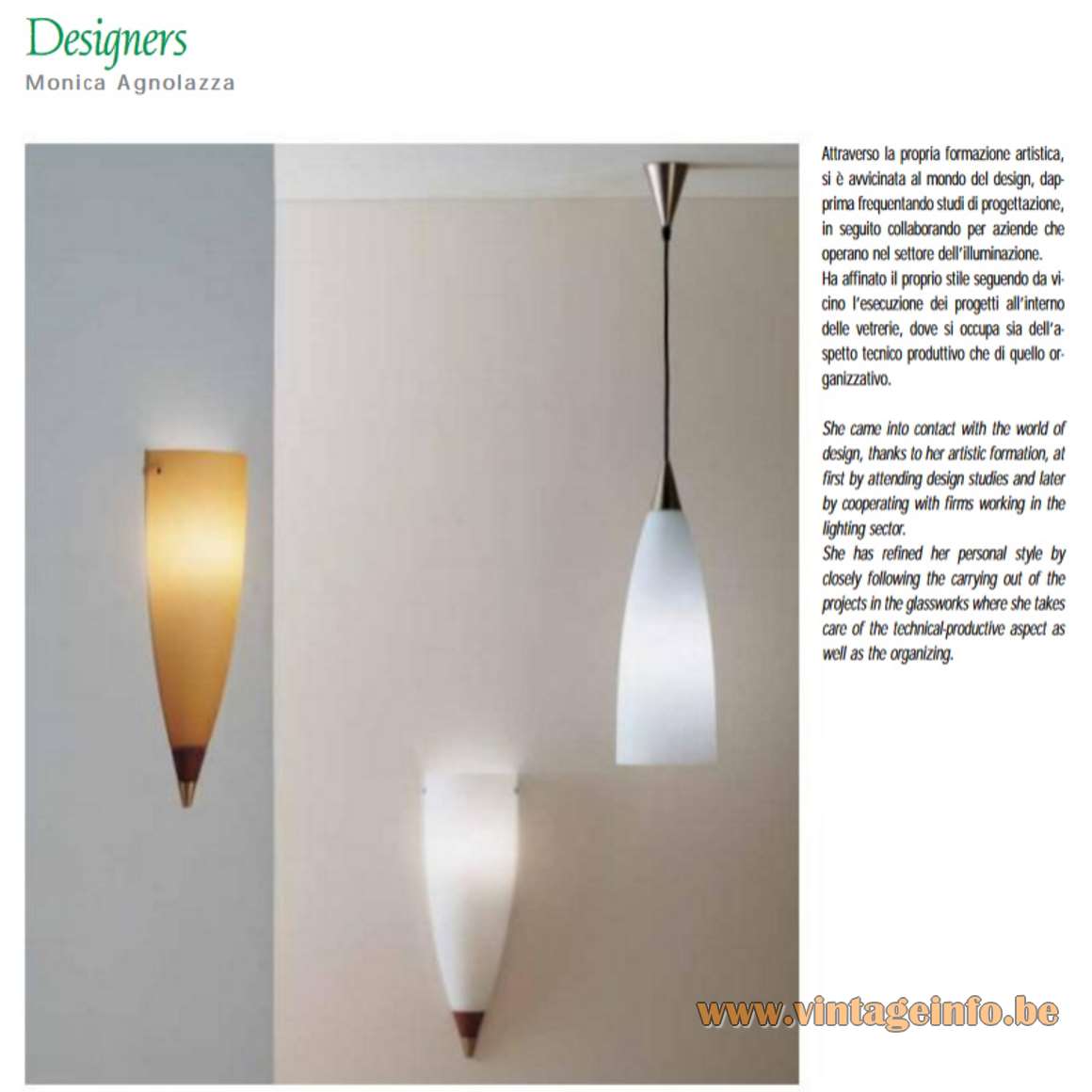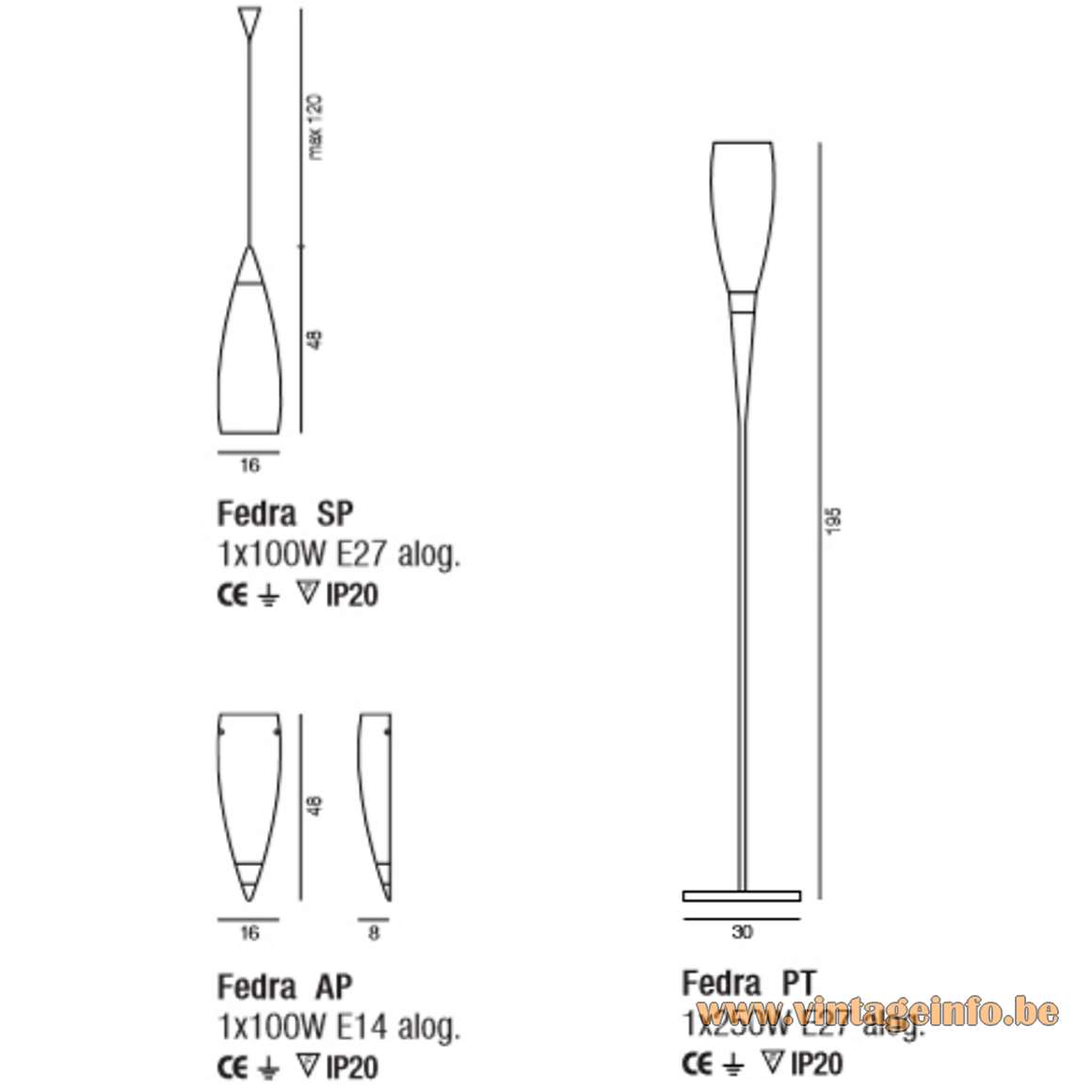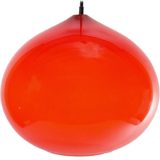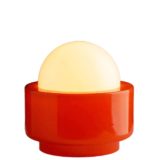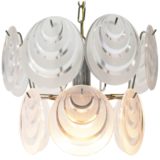Vetreria Vistosi Fedra Pendant Lamps – Catalogue Pictures
Links (external links open in a new window)
Vistosi history – Vistosi website
Luciano Vistosi in the Murano glass Museum
Biography of Luciano Vistosi on the Murano Glass Museum website
Inexhibit: The sculpture of Vistosi at the Murano Glass Museum
Murano glass blowing – Wikipedia</a >
Vintageinfo
Vetreria Vistosi Fedra Pendant Lamps
Materials: White satin-finish or frosted hand-blown conical bell shaped Murano glass lampshades. Satin-finish conical nickel-plated metal (iron) top and canopy. Rubber coated electric wire, some plastic parts. Some metal parts. Metal E27 socket.
Cord Length: +- 70 cm / 27.55”
Height: 48 cm / 18.89”
Width: ∅ 16 cm / 6.29”
Electricity: 1 bulb E14 halogen, 1 x 100 watt maximum, 110/220 volt, IP20.
Any type of E14 light bulb can be used. But preferable a white/opaque or frosted one. Bright light bulbs cause streaks on the glass and therefore also on the walls. These 3 lamps have E14 sockets, but the catalogue scheme below says E27. Probably they were made in 2 versions or it’s a typo.
Period: 1990s – 2000s.
Designer: Monica Agnolazza.
Manufacturer: Vetreria Vistosi, Murano, Italy.
Other versions: This Vetreria Vistosi Fedra pendant lamps exists as a wall lamp (AP) and a floor lamp (PT). Also made in yellow topaz colour. The wall and floor lamp also have a wood decoration. The pendant lamp is model SP. These lamps were at least produced until 2003.
Monica Agnolazza
Little is known about Monica Agnolazza. She seems to have disappeared into thin air. Only a text in a Vistosi catalogue tells a story:
“She came into contact with the world of design, thanks to the artistic formation, at first by attending design studies and later by cooperating with firms working in the lighting sector. She has refined her personal style by closely following the carrying out of the projects in the glassworks where she takes care of the technical-productive aspect as well as the organizing.”
Vistosi
Early Origins
The story of Vistosi begins in Murano with the Gazzabin family, who acquired the Al Bastian furnace in 1640. Soon after, the family name “Vistosi” emerged, and by 1791Gio-Batta Vistosi had become Gastaldo dell’Arte, head of the Murano glassmakers’ guild.
A New Beginning after the War
In 1945Guglielmo Vistosi, heir of the Gazzabin family, opened a new furnace in Murano right after World War II, focusing on lighting. Following his premature death, his sons Gino and Luciano, together with their uncle Oreste, laid the foundation of the modern Vistosi company.
The Design Revolution of the 1950s–1980s
The arrival of Venetian architect Alessandro Pianon in 1956 marked a turning point. With Gino and Luciano, he transformed the company into a pioneer of innovation and modern design.
From the late 1950s to the 1980s, Vistosi collaborated with some of the most influential names in design, such as Angelo Mangiarotti, Gae Aulenti, Ettore Sottsass Jr., Massimo Vignelli, Adalberto Dal Lago, Stefania Giannotti, Elleonore Peduzzi Riva, Vico Magistretti, Michele De Lucchi and many others. This golden era produced some of the most iconic Vistosi lighting, now highly sought after by collectors.
The Moretti Era
In 1989 the brand was acquired by Murano businessman Giancarlo Moretti, who had long experience in the glass industry. His son Matteo Moretti later relaunched the company after a short closure in the 1990s, expanding it with the acquisition of brands such as Alox, G2 and Triade.
The last of the founding generation, Luciano Vistosi (1930 – 2010), devoted his later life to research and glass sculpture, leaving a lasting artistic legacy.
Innovation and Recognition since the 2000s
From the early 2000s, Vistosi entered a new phase of experimentation and recognition. Collections such as Rina, Cheope09 and Minigiogali updated traditional techniques for contemporary forms. Later came Giogali 3D, a new interpretation of the famous chandelier, and Diadema, created with a unique patented rod process. Award-winning designs like Futura, Nodo, Trepai, Jube, Sata, Stone and Armonia confirmed Vistosi ’s relevance in international design.
In 2019 the company celebrated the 50th anniversary of Giogali, and in the following years it was recognised among the 100 Eccellenze Italiane, partnered with the Venice Glass Week, and launched a Virtual Museum, e-commerce platform and LED collections.
Designers of the Contemporary Period
Under the Moretti family, Vistosi worked with a wide range of contemporary designers, including Chiaramonte & Marin, Mauro Olivieri, Barbara Maggiolo, Paolo Crepax, Monica Agnolazza, Silvio Zanon, Giovanni Barbato, Matthias Hickl, Roberto Maci, Alberto Nason (son of Carlo), Romani Saccani Architetti Associati, Gregorio Spini, Emmanuel Babled, Oriano Favaretto, Marco Acerbis, Castaglia Associati, Pio e Tito Toso, Renato Toso, and Noti Massari & Associates.
A Defining Design
A remarkable fact in Vistosi ’s history concerns the famous Giogali chandelier series. Although countless catalogues, books and online sources credit the design to Angelo Mangiarotti, it was in fact created by Gino Vistosi himself – according to Gino Vistosi’s daughter.
